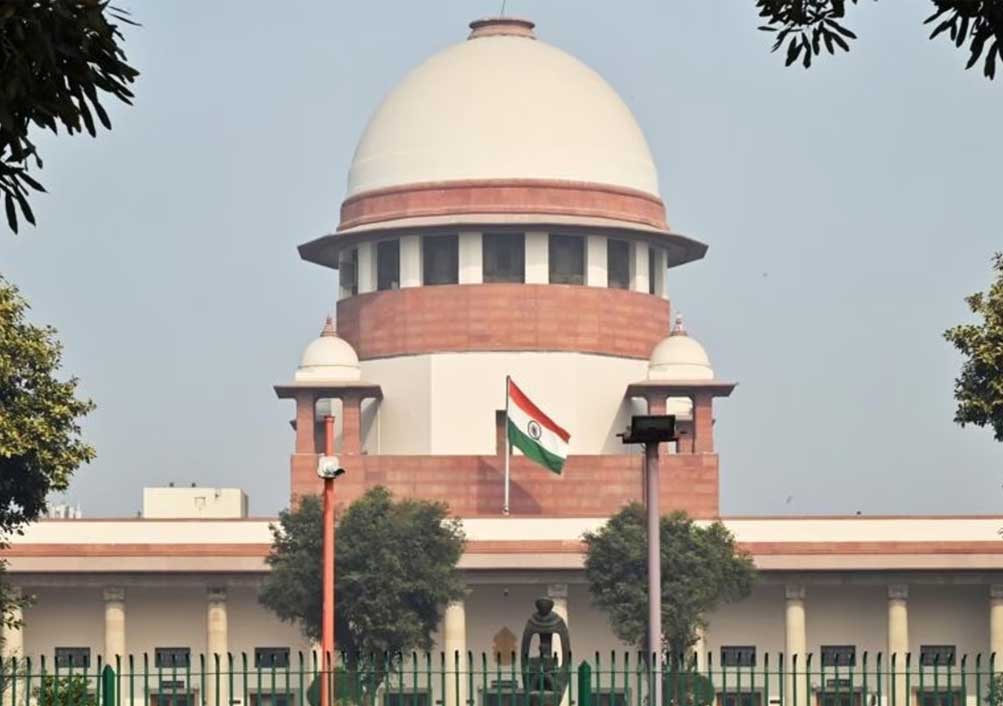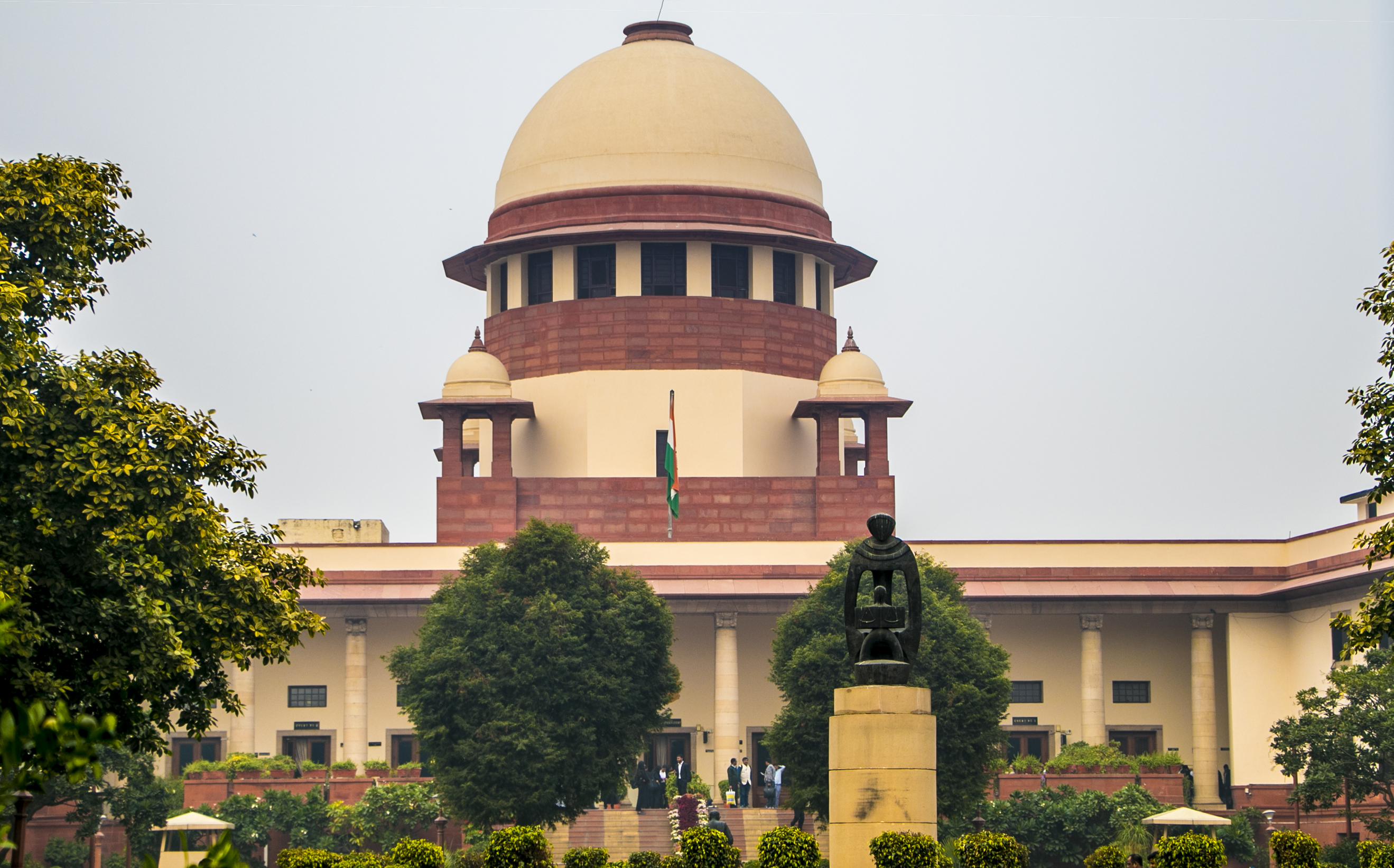In CRIMINAL APPEAL NO.1338 OF 2010-SC- Principle applicable to circumstantial evidence requires that facts must be consistent with hypothesis of guilt of accused; in the present case evidence adduced gives rise to doubts, improbabilities & inconsistencies: Apex Court acquits murder convict in case based on circumstantial evidence
Justices B.R. Gavai & Pamidighantam Sri Narasimha [05-01-2024]

Read Order: PRADEEP KUMAR v. STATE OF HARYANA
LE Correspondent
New Delhi, January 8, 2024: The Supreme Court has acquitted a murder convict as there was “a yawning gap” between the charge against the appellant and the evidence that the prosecution has adduced.
It was the case of the prosecution that while the Assistant Sub Inspector (PW-21) was with other police officials on duty, the complainant-Sunil Kumar Bhura (PW-20) met him and got his statement (EX.PY) recorded. The statement had said that he is a resident of Nehru Garden Colony, Kaithal and the deceased-Shamsher Singh is related to him, being son of his paternal aunt. The previous day, when PW-20 was in the office of the deceased along with one Balwant Singh (PW-18), the deceased received a few calls. After conversing on the mobile phone, the deceased informed them that he had to go to Gole Market and left on his motorcycle. The complainant and Balwant Singh also left the shop of the deceased. In the morning, the deceased’s wife informed PW-20 that the deceased had not returned the previous night. On receiving the said information, PW-20 and PW-18 reached the house of the deceased and thereafter went on a search for the deceased.
When PW-20 got the information that a dead body was found lying, he along with PW-18 and one Mr. Naresh (PW-13) reached the spot and saw that the deceased lying there, with his throat having knotted with some cloth, and the right eye being badly injured. They also noticed some injuries on the head of the deceased. The motorcycle of the deceased was parked by the side. While Naresh and PW-18 remained at the spot, PW-20 had come to inform the police about the incident and his statement was thus recorded and read over to him by the investigating officer (PW-21) with his endorsement. After the FIR was registered, PW-24 took over the investigation and recorded the statements of witnesses.
The sole appellant herein was tried along with another accused for the murder of one Samsher Singh and convicted under Section 302 read with Section 34 of the Indian Penal Code, 1860 for murder and sentenced to rigorous imprisonment for life by the Trial Court (The Additional Sessions Judge). In appeal, the High Court of Punjab & Haryana, by the impugned judgment, dismissed the appeal and confirmed the conviction and sentence. Thus, the appellant approached the Top Court.
The Division Bench, comprising of Justice B.R. Gavai and Justice Pamidighantam Sri Narasimha, rejected the evidence of PW-10, an Ex. Sarpanch of the village Geon, and also held that this witness was not trustworthy. The Bench also opined that the testimony of the chance witness was completely unreliable as there were too many coincidences in his version and his story was improbable in the context of the facts and circumstances of the case. The Bench also dismissed the version of another chance witness, PW-12, whose testimony was relied on by the prosecution to prove the last seen theory. These were the three witnesses whose versions were relied upon by the lower Courts.
Apart from the improbable and contradictory versions of the three witnesses, the appellants had brought to the Court’s notice that the weapons recovered by the IO and the ones seen by the witnesses were only sticks. However, the deceased had suffered an incise wound which according to the doctor, PW-14 who conducted the post-mortem, was caused by a sharp-edged weapon. The prosecution had not recovered any sharp-edged weapon and there was no mention about such weapon at all.
The FSL report stated that the blood on the sticks, blood-stained pants and the blood group of the deceased was the same. The Bench opined that the appellant’s counsel had rightly contended that this was not an indication of the guilt.
Admittedly, there were no eyewitnesses, and the entire case of the prosecution depended upon circumstantial evidence. Reference was made to Pritinder Singh v. State of Punjab, [LQ/SC/2023/733] and Sharad Birdhichand Sarda v. State of Maharashtra [LQ/SC/1984/171] wherein it has been held that circumstances should be of a conclusive nature and tendency. They should exclude every possible hypothesis except the one sought to be proved, and there must be a chain of evidence so complete so as not to leave any reasonable ground for the conclusion consistent with the innocence of the accused and must show that in all human probability the act must have been done by the accused.
“There is a yawning gap between the charge against the Appellant and the evidence that the prosecution has adduced. The circumstances do not establish the guilt of the Appellant at all. While the principle applicable to circumstantial evidence requires that the facts must be consistent with the hypothesis of the guilt of the accused, in the present case the evidence adduced gives rise to doubts, improbabilities and inconsistencies”, the Bench held.
Thus, allowing the appeal, the Bench acquitted the Appellant of all charges.
Sign up for our weekly newsletter to stay up to date on our product, events featured blog, special offer and all of the exciting things that take place here at Legitquest.




Add a Comment